Jamie Titus, BS, MLT(ASCP)
- Adjunct Instructor
- Medical Laboratory Technology Program
- Seward County Community College/Area Technical School
- Allied Health Department
- Liberal, Kansas
This may well explain why two individuals may have a stroke in the same region medicine identifier pill identification purchase pirfenex master card, and one will present with dysphagia medicine 831 buy pirfenex 200 mg with mastercard, whereas the other may not treatment improvement protocol order pirfenex with amex. Anterior lesions and subcortical periventricu lar white matter sites are more associated with risk of aspiration than posterior sites or lesions to the subcortical grey matter structures (Daniels and Foundas symptoms 3 weeks pregnant cheap 200 mg pirfenex fast delivery, 1999). In cortical stroke, the middle cerebral artery is most likely to be responsible for dys phagia (Paciaroni et al. For example, although many swallowing problems resolve over the rst week, within a 6-month period 6% to 8% of the population will have persistent prob lems, with 2% to 3% developing swallowing problems 6 months post onset. They found that individuals post right-sided stroke had more pharyngeal stage dif culties, whereas the left-sided group experienced more dif culties in the oral phase (often motility related). Apraxia is an inability to perform skilled acts of movements that cannot be accounted for by weakness, sensory loss, inco ordination, inattention and perceptual or comprehension impairment (Carota et al. In swallowing apraxia, there is dif culty initiating the swallow, sometimes with searching movements of the tongue prior to swallow initiation (Logemann, 1998). The differences for dysphagia between left and right-hemispheric strokes are small and most probably due to the fact that swallowing is mediated by both cerebral hemispheres with descending input to the medulla. Recent research shows that recovery of swallowing after stroke is associated with increased pharyngeal representation in the unaffected hemisphere (Hamdy et al. This suggests cortical plasticity with reorganization of the intact hemisphere during recovery of swallowing function. Individuals presenting with a subcortical stroke (for example, a stroke affecting the basal ganglia) may demonstrate delays in the oral and pharyn geal phases of swallowing due to the affects of the subcortical structures on motor as well as sensory pathways to and from the cortex. The medullary region houses the nuclei critical to swallowing coordination and organization (nucleus of the tractus solitarious and the nucleus ambiguous). These nuclei receive the incoming sensory information and plan the motor response. A stroke in this region may result in near normal oral control but signi cant dif cul ties in the organization of the pharyngeal phase of the swallow (Logemann, 1998). With the pharyngeal phase affected, de cits are seen in bolus propulsion through the pharynx, reduction in hyolaryngeal excursion and consequently pooling in the pharynx after the swallow (valleculae and pyriform sinuses). Patients may spontaneously apply manoeuvres such as the effortful swallow in an attempt to move the bolus out of the oral cavity and through the pharynx. Clinicians should also be aware that the respiratory centres are housed in this medullary region. Logemann (1998) reported that dysphagia is quite severe in the rst 1 to 2 weeks after a medullary stroke. Often patients are reported to have a functional swallow at 3 weeks after the stroke; however, for those where dysphagia remains, the recovery period may be up to 6 months after the stroke. Pontine strokes, which are also in the brain stem, but higher than the medulla, may cause spasticity of the pharyngeal musculature. The spasticity will affect the promptness of triggering a swallow re ex, and ef ciency in moving the bolus through the pharynx. A summary of the presenting post-stroke dysphagia characteristics can be seen in Table 9. After acute stroke, the prevalence of malnutrition has been reported to increase from about 16% on admission to between 22% and 35% at 2 weeks. Perry (2004) has described a reduced energy intake that is associated with modi ed diets. Six months after a stroke, individuals with dysphagia and communication impairment presented with signi cant energy and protein de cits, high levels of eating-related disability and nutritional risk. Research is also under way to ensure that the texture-modi ed diets are nutrient dense, avoursome and appealing. Neither group presented with adverse respiratory conditions during the trial or for 30 days after the trial. Interestingly the group that received the combination of thickened uids and water were discharged earlier than the individuals who received only thickened u ids. Perry (2004) reported a high incidence (80%) of non-oral feeding in the rst week after the stroke where communication impair ment was also implicated. This gradually decreased to about 11% remaining non-oral 6 months after the stroke. Independence in feeding reached a high of only 39% 6 months after the stroke, with 50% of the population requiring continued assistance. It is reported in up to 70% of patients, even a considerable time after stroke (Carota et al. Fatigue and depression can have an impact on cognitive, physical and social functioning, which will affect their success with rehabilitation. Impulsivity during eating may be observed as the patient continually lls the oral cavity without necessarily swallowing the previous bolus. Verbosity may be come problematic at meal times due to the inclination to continue speaking while attempting to chew the bolus and/or swallow. Left neglect may increase the likelihood of left-sided oral cav ity pooling which the patient may not be aware of. Impaired cognitive skills (poor attention or concentration) may affect any individual with stroke, regardless of side of lesion. Cognitive de cits make it dif cult or even impossible for the patient to learn compensatory manoeuvres or strategies. As noted above, individuals with left-sided stroke may present with apraxia (swallowing apraxia or oral apraxia). Pa tients with swallowing apraxia tend to do better if able to self-feed, rather than with verbal commands to swallow (Logemann, 1998). It is also important for the clinician to be aware that most stroke patients with dysphagia will rarely perceive that they have a swallowing problem (Parker et al. Patients with a poor awareness of the clinical indicators of dysphagia are more likely to present with complications even several months post stroke (Parker et al. Cranial nerve de cits may arise from compression of the cranial nerves, poor vascular supply or from in ammation. Dysphagia is most likely to be affected by compression or in ammation of the cranial nerves. In brief, these nerves are critical for the oral preparatory phase of swallowing and the sensation of taste. Its cause is unknown and all facial muscles on the side affected by the in ammation are affected. Individuals will need to be aware of the potential for pocketing of food in the lateral sulcus of the side affected. De cits of the lower motor neurones can result in dysarthria, dysphagia, choking and hoarseness. Bulbar palsy may be a feature of a tumour in the medulla, myasthenia gravis, syringobulbia and of in ammation of the basal meninges. Tongue involve ment in a bulbar palsy will show signs of muscle wasting and possibly fasciculations.
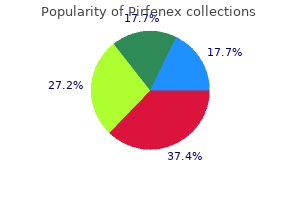
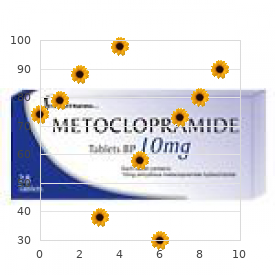
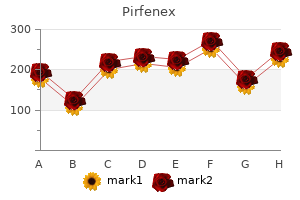
Because the management of patients with developmental disorders is resource intensive symptoms xanax addiction order line pirfenex, this group of children would benefit from improved government funding medicine synonym discount pirfenex 200mg with mastercard. Advocacy for such improvement in funding needs to be initiated at many levels by different advocates medicine lake california pirfenex 200mg otc, including those in the medical professions medications used to treat schizophrenia purchase 200 mg pirfenex with amex. One of the challenges for a physician faced with a patient with acute diarrhea is to know when to investigate and initiate treatment and when to simply wait for a self-limiting condition to run its course. Outline absorption of nutrients by describing the membrane transport systems of the small intestinal epithelium and the epithelial absorptive surface. Contrast the effect of the two different types of diarrhea on electrolyte concentration and volume status if volume of diarrheal fluid lost is identical. Inter-nuclear ophthalmoplegia (multiple sclerosis, brain stem infarction) (In children consider post-viral inflammation, brain stem tumor) b. Fracture of orbital floor Key Objectives 2 Determine whether the condition of monocular diplopia is present or the diplopia is binocular (resolves with occlusion of vision to either eye). If a motor vehicle accident occurs, the physician who diagnosed diplopia may be legally liable if both the patient and/or the motor vehicles branch (provincial statutes vary) were not advised that driving is not permitted (until the diplopia is reversed, if possible). Identify the parasympathetic fibers that run with the 3rd nerve as responsible for pupillary function that is affected by lesions compressing this nerve. Syncope/Presyncope 10% Key Objectives 2 Determine whether patients complaining of dizziness have true vertigo (an illusion of motion, self or environment, arising from asymmetry of the vestibular system, that is episodic, never continuous, provoked by head position change without decreasing blood pressure). In such circumstances, the important role of the physician is to alleviate any suffering by the patient and to provide comfort and compassion to both patient and family. Key Objectives 2 When caring for a dying patient, physicians must formulate a plan of management that ensures adequate control of pain, maintenance of human dignity, and avoids isolation of patients from their family. Distinguish between pain management for intractable symptoms and physician-assisted suicide. There is a need for physicians to balance such concerns with their moral obligation to treat pain in the suffering patient. The bioethical principle of double effect is important to patients and to physicians who care for such individuals. Administration of pain medication to a dying patient does not violate legal tenets. Distinguish between pain management for persistent symptoms and physician-assisted suicide. Balance such concerns with the legal obligation to treat pain in the suffering patient. Euthanasia requires a physician to physically administer a medication with the intent of causing death. Alleviate suffering in a patient enduring a terminal illness and experiencing pain even to the point of causing unconsciousness and hastening death. Indeed, there may be a legal risk to clinicians that do not treat pain effectively. In summary, the treatment of pain is legally acceptable even if it hastens the death of a patient as long as there was no intention to do so by the physician (principle of double effect). Attention to clinical information and consideration of these conditions can lead to an accurate diagnosis. Diagnosis permits initiation of therapy that can limit associated morbidity and mortality. Include oxygenation derangement as well acidemia and hypercapnia as causes of dyspnea in addition to stimulation of mechano-receptors throughout the upper airway, lungs, and chest wall. Usually patients have cardio-pulmonary disease, but symptoms may be out of proportion to the demonstrable impairment. Other (diaphragmatic hernia, massive ascites, severe scoliosis) Key Objectives 2 For correct assessment, consider the respiratory rate in the context of age of the child (neonates normally breathe 35-50 times per minute, infants 30-40, elementary school children 20-30, and preadolescents 12-20) and observe the quality of the breathing. In febrile young children, who most frequently are affected by ear infections, if unable to describe the pain, a good otologic exam is crucial. Infections (sinusitis, adenitis, dental/pharyngeal/peritonsillar abscess, parotitis) b. Other (thyroiditis, cervical spine disease, temporo-mandibular joint dysfunction, wisdom teeth, migraine, trauma, neoplasms) Key Objectives 2 Perform careful examination of the head and neck and upper aero-digestive tract, including the jaw, parotids and thyroid for referred pain, as well as ears (use tuning fork), cervical lymphatics, and mastoid areas. At times the swelling may be caused by relatively benign conditions, but at times serious underlying diseases may be present. Infiltrative dermopathy (usually associate with thyroid disease) Key Objectives 2 Diagnose proximal lower extremity deep venous thrombosis with accuracy and certainty since untreated it may lead to pulmonary embolus, and treatment with anticoagulation is associated with significant risk. Other types of injury are relatively less common, but important because excessive manipulation may cause further damage or even loss of vision. Hyphema Key Objectives 2 Determine whether the condition requires prompt referral. In a patient with eye redness that is painful and associated with diminished or loss of vision, any uncertainty about diagnosis and/or management should lead to early, prompt referral to a specialist. Outline the relationship between the anterior chamber angle anatomy and acute angle glaucoma or uveitis; orbit proximity to sinuses and orbital cellulitis. Outline the immune mechanisms of systemic conditions associated with eye redness and determine the rationale of pharmacotherapy of the conditions. List common infectious agents causing eye redness such as blepharitis, keratitis, conjunctivitis, posterior uveitis, orbital cellulitis. Since failure to thrive is attributed to children<2 years whose weight is below the 5th percentile for age on more than one occasion, it is essential to differentiate normal from the abnormal growth patterns. Increased calorie requirements (hyperthyroid, malignancy, chronic infection/inflammation, respiratory insufficiency, congenital heart disease, anemia, toxins) 3. If patient is alone, educate about what to do if they fall (emergency response system or telephone that is accessible from floor). Patients who have had a fall should be evaluated for ability to drive and then counselled about driving. Patients with this diagnosis should be advised to be cautious about undertaking high-priced and potentially unsafe courses of therapy. Physicians should guard against the temptation to prescribe empiric treatment of any type. They require initial management by primary care physicians with referral for difficult cases to specialists. Non-accidental injuries (violence) Key Objectives 2 In a patient with a fracture or dislocation, determine other aspects of the medical history that might have an impact on and alteration of management. Briefly outline the process of cell division, regeneration, and differentiation as it pertains to bone healing. Midline lesions (tumors, hemorrhage, infarct, multiple sclerosis, drugs, toxins) ii. Higher level gait disorders (disorders of frontal lobes, basal ganglia, thalamus, midbrain such as stroke, hydrocephalus, dementia, tumors) d. Hysterical gait Key Objectives 2 Determine whether the gait disturbance occurs more in the dark or light (sensory), whether giddiness or vertigo (vestibular) accompanies the disturbance, presence or absence and distribution of muscle weakness, and whether there is pain, numbness, or tingling in the limbs (sensory). Primary care physicians must provide counseling about risk factors such as maternal age, illness, drug use, exposure to infectious or environmental agents, etc. Primary care physicians may be called upon to determine the nature of the problem. Adrenal tumors/Hyperplasia Key Objectives 2 Evaluate newborn infants with ambiguous genitalia and adolescents with abnormal sexual maturation so that appropriate referrals for specialized care can be facilitated.
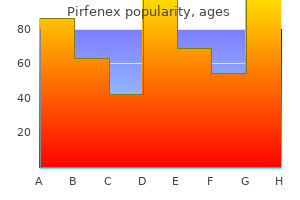
Perfil comunicativo medicine 7253 pill buy discount pirfenex 200mg line, desempenho sociocognitivo symptoms kidney cancer discount 200mg pirfenex amex, vocabulario e meta-representacao em criancas com transtorno do espectro autistico treatment centers for alcoholism trusted pirfenex 200mg. A developmental approach to difficulties in relating and communicating in autism spectrum disorders and related syndromes medications given before surgery 200mg pirfenex. Relationship Development Intervention for Children, Adolescents and Adults with Autism/ Asperger. Effects of a computer-based intervention program on the communicative functions of children with autism. Language profiles in children with autism: theoretical and methodological implications. An investigation of language impairment in autism: implications for genetic subgroups. Parent-Assisted Social Skills Training to Improve Friendships in Teens with Autism Spectrum Disorders. Habilidades pragmaticas, vocabulares e gramaticais em criancas com transtornos do espectro autistico. Communicative intent and tool use in children with psychiatric disorders, Pro-Fono Rev Atual Cient, Vol. Assessing communication in the autistic spectrum: interference of familiarity in language performance. Adaptative behavior in autism and pervasive developmental disorder-not otherwise specified: microanalysis of scores on the Vineland Adaptative Behavior Scale. Communicative Competence in Parents of Children with Autism and Parents of Children with Specific Language Impairment. Theory of mind in children with autistic disorder: evidence of developmental progression and role of verbal ability. A longitudinal study of language acquisition in autistic and Down syndrome children. The use of two language tests to identify pragmatic language problems in children with autism spectrum disorders. The diagnostic procedures always involve clinical observation and behavior identification. Although several hypothesis claim that this is a neurobiological disorder with a strong genetic component no biological marker for autism was identified (Gothem et al. Several authors point out that some language and communication difficulties of children with autism will probably follow them throughout life, especially if they are not included in remediation programs (Grela & Mclaughlin, 2006; Koegel, 2000; Mandell & Salzer, 2007; Mesibov et al, 2007; Rogers et al. The question about the possibility of identification of the best therapeutic approach for children with autism has also been frequently discussed on the literature (DiLalla & Rogers, 1994; Fernandes, 2000a; 2000b; Giddan et al, 1995; Kuschner 2007; Partington & Sundberg, 1998; Toth et al. The search for alternatives of more efficient language therapy approaches for autistic children has been the focus of several important researches. Several authors suggest that it seems premature to suppose that just one therapeutic approach is more effective than the others. It is suggested that the intervention should be individualized, in the sense of identifying the present level of development of each child and the profile of strong and weak points of each one (Gothem, 2007; Prizant & Rubin, 1999, Solomon et al, 2007; Mesibov & Shea, 2010; Vismara & Rogers, 2010). The best therapeutic approach to children of the autism spectrum is still undetermined and probably depends on several factors such as individual profile, family characteristics, 24 A Comprehensive Book on Autism Spectrum Disorders educational and intervention alternatives. The determination of the meaningful variables is essential to the better use of the available resources. Most of the therapeutic intervention programs aim the development of functional speech and use a variety of techniques to achieve it: increasing motivation, use of directive reinforcements (positive or negative, depending on the proposal), variations of concrete stimulus, reinforcement of verbal communicative attempts, use of multiple examples and others. These intervention processes should address increasing spontaneity, varying communicative functions, using language socially and other aspects involved in communicative efficiency. The application of research results as the basis of therapeutic intervention proposals has resulted in studies about therapeutic processes and their outcomes, allowing improvement of evidence based practice. This chapter will discuss the theoretical basis of language therapy within the pragmatics linguistic framework and describe different therapeutic models within the same approach as well as experiences of mother coaching and a follow-up study. It is probably due to the fact that the studies evolved to the notion that the central language feature within the autism spectrum is related to the functional use of language, especially regarding its interface with social cognitive development. The pragmatics theories focus exactly on these areas of development (Bates, 1976; Hallyday, 1978) and therefore provide consistent support to the analysis as well as to the proposal of intervention programs. The effectiveness of different therapeutic approaches suggests that any conclusion must take into account data about social and familiar contexts that play central roles in practical issues such as frequency of attendance, continuity of the intervention process and involvement with the therapeutic proposals. It is premature and deceiving to suggest that one sole therapeutic approach is more effective than the others and that there is a method that is more effective with all children. The proposed therapeutic framework focus on the individual communicative profile that considers: the communication interactivity (including the number of communicative acts produced per minute and the proportion of more interpersonal communicative functions expressed); the communicative means (basically verbal, vocal and gestural communicative means, but it can be expanded to include written language or any form of sign language); initiative for interaction; discursive abilities (including conversational and joint attention strategies) and social cognitive performance. The individual profile is the base for individually designed language intervention processes they may include the formal aspects of language (such as speech articulation, vocabulary, grammatical complexity or reading comprehension skills). With the support of research data, three alternative models will be discussed: individual therapy (based in building the communicative partnership through supportive interaction); language workshop (where two subjects allowed symmetric interaction and provided communicative challenges) and mother-child language therapy (designed to provide a more comprehensive intervention and improve communicative settings at home). Anticipating some results, it can be stated that apparently peer communication situations provide a symmetry that is not obtained in situations with adults. This symmetry provides Language Therapy with Children with Autism Spectrum Disorders 25 affective performance demands and communicative challenges in which subjects must use their communicative abilities. Therefore, it seems to be possible to use temporary controlled changes during the therapeutic process and maintaining the progress rhythm of in the long term. On the other hand, language therapy process can also benefit from specific orientations to caretakers about language and communication processes focused on individual profiles of abilities and inabilities of each communicative dyad. The proposal of mother-child language therapy settings aims to create the possibility of a more comprehensive intervention process, especially improving the alternatives of more productive communicative settings at home. The inclusion of mothers in the therapeutic process during a set period of time, however, demands the determination of parameters indicating when to begin this type of intervention, its duration and the procedures for a long time support. Long term therapeutic processes, as is the case with autistic children, also demand consideration about the long term results obtained from short term interferences. Different intervention models: Research data the study was proposed to determine if there are more efficient intervention procedures to improve communication abilities of children with disorders of the autism spectrum and to identify possible differences in the functional communicative profile and in the social cognitive performance of 36 autistic children and adolescents receiving language therapy in three different models. Based on the Pragmatic theories of Linguistics (Bates, 1976) and on previous research results (Cardoso & Fernandes, 2006; Fernandes, 2005), the therapeutic framework that was common to all the intervention procedures, regardless of its specific model, can be synthesized in some central points: Focus on the individual profile: the absence of chronological order of the developmental milestones is not altogether rare within the autism spectrum. Children that, for example, learn to read before being able to name the basic colors are fairly frequent among the ones with diagnosis within the autism spectrum. However, in the opposite situations, whether if the child has severe behavior problems or if he or she is extremely talkative (to the point of ignoring the listener), the therapeutic focus is easily directed towards other issues. Therefore, symmetric communicative situation, where all the participants share equally the communicative initiative and where most of the communication has interpersonal functions, is one of the most important aims of any intervention program. Several studies indicate that autistic children that can speak are frequently considered 26 A Comprehensive Book on Autism Spectrum Disorders more normal by their parents even when their performance in other areas is worse than that of non-speaking children. For example, a child that verbally reproduces a sequence of train stations may communicate more personal contents through much less intelligible emissions or even gestures. The attention to all communicative means will contribute to more effective and personal exchanges. The therapeutic setting, therefore, must be flexible and offer opportunities to problem solving while also being organized enough to avoid producing stress and anxiety.
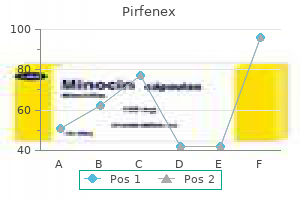
Syndromes
- Phosphoric acid
- Long-term diarrhea
- Injecting steroids or an antibiotic called gentamicin directly into the middle ear can help control vertigo.
- Pyrogallol
- Kidney and other urinary tract problems, such as infection, tumor, or stones
- Acromegaly
- Stool guaiac test to check for blood in the stools
- Your pregnancy is harmful to your health (therapeutic abortion).
- U.S. Centers for Disease Control and Prevention - www.cdc.gov
- You have symptoms of nephrotic syndrome
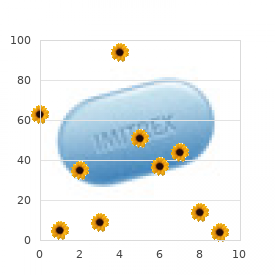
It is clear treatment gonorrhea purchase pirfenex discount, though medicine 79 cheap pirfenex master card, that children with Asperger Syndrome may need more help and support than some of your typically developing students symptoms bronchitis discount 200 mg pirfenex free shipping. The investment of time and energy in the strategies listed above can pay off tenfold not only for the child with Asperger Syndrome treatment under eye bags cheap 200 mg pirfenex otc, but also for all the young learners in your school community. As you learn more about children with differences and how to support their inclusion in the classroom, you will become a mentor to other educators who may be facing this challenge for the first time. Many of the skills that make you a powerful educator will help you succeed in the tasks ahead of you. Most of all, your collaboration skills will General education teacher help you work as a key part of the team that will support the child with Asperger Syndrome throughout the course of the school year. These support strategies must be available to the child at all times and in all environments. Presented below are examples of sensory support strategies and fidgets that can be used to address common sensory problem areas for young people with Asperger Syndrome. For a more comprehensive guide to the interpretations of and interventions for sensory-related behaviors, see Asperger Syndrome and Sensory Issues: Practical Solutions for Making Sense of the World. Sensory Support Process Sensory Problem Signs or Behavior Overly sensitive to touch, movements, sights, or Distractible, withdraws when touched, and avoids sounds certain textures, clothes, and foods; reacts negatively to ordinary movement activities, such as playground play or P. Under-reactive to sensory stimulation Craves intense sensory experiences, such as spinning, falling, or crashing into objects. Coordination problems Poor balance, great difficulty in learning a new task that requires motor coordination; appears awkward, stiff, or clumsy. Poor organization of behavior Impulsive or distractible; shows lack of planning in approach to tasks; does not anticipate results of actions; difficulty adjusting to new situations or following directions; gets frustrated, aggressive, or withdrawn when encountering failure. Unusually high/low activity level Constantly on the move or slow to get going and fatigues easily. Poor self-concept Lazy, bored, or unmotivated; avoids tasks; appears stubborn or troublesome. Note: Taken from the book, Answers to Questions Teachers Ask About Sensory Integration, by Carol Stock Kranowitz, M. A child with Asperger Syndrome may encounter at least one or more of the following: Examples of Sensory Needs and Supports Sample Sensory Problem Area Sample Support Strategy and Fidget Caesar has difficulty pouring a glass of water without Increase the weight of the container and spilling it. He may have trouble with motor decrease the amount of liquid in it, or fill cups or planning related to successfully completing a task. Greta cannot keep her hands and feet to herself Provide a visual or physical boundary for sitting, during circle time in her preschool classroom. He may like his outfit because of the lotion on the child, removing irritating clothing soft cotton texture and dislike jeans because of the tags, or using a fragrance-free detergent. Chen constantly chews on her pens and pencils at Provide her with something appropriate to chew school and her clothing at home. She may find this on, such as candy, straws, gum, or a sports-type calming or may be seeking oral, tactile, or water bottle. A standard set of interventions should not be prescribed for individuals with Asperger Syndrome, as each student will have individual needs. Interventions that provide predictability, support, and empowerment, while also reducing anxiety and building on strengths, are generally effective. Some interventions that merit consideration for young people with Asperger Syndrome include: Priming Classroom assignment accommodations Visual supports Home base Choice making Handwriting modifications Incorporation of special interests Homework considerations these intervention activities are described in more detail on the following pages. Priming is not a time for teaching or reviewing the content of activity, or having the student actually complete the activity. Priming may occur the day before an activity, the morning of it, the class period before, or even at the beginning of the class period when the activity will be completed. Priming should occur in short, concise time periods in an environment that is relaxing for the student with Asperger Syndrome, and with a person who is patient and supportive. Students with Asperger Syndrome also have a difficult time neurologically shifting from one thought process to another. For this reason, grouping like questions together on quizzes and tests will be very helpful. Common examples of these accommodations include: Allowing additional time for the student to complete tasks Shortening tasks or reducing the number of tasks for student to complete Outlining precisely what information the student should learn from reading Giving students a model to follow of what is expected on assignments Modifying assignments can be accomplished easily without drawing undue attention to the student. Students with Asperger Syndrome may also read slowly and have trouble discerning important facts from irrelevant information. Highlighted text and study guides help these students maximize their reading time. Teachers can also help by identifying the information the student will be responsible for in upcoming tests. A model of what is expected on assignments or a specific list of grading criteria may also be helpful for students with Asperger Syndrome. For example, if an essay will be graded on neatness and spelling, as well as content, this must be explained to the student. Therefore, care should be taken when designing visual supports for young people with Asperger Syndrome to ensure that they are either used by everyone in the class or that they are not obvious to others in the class except the teacher and student with Asperger Syndrome. Although the use of visual supports may benefit all students, they are essential for students with Asperger Syndrome. A variety of visual supports that can be used to make life easier for students with Asperger Syndrome at the middle and high school levels are shown in the table below. Visual Supports for Secondary School Students with Asperger Syndrome Type and Purpose of Support Description Location Map of school outlining classes: the map shows the student where Taped inside locker Assists the student in his or her classes are, the order in Stuck inside back navigating school halls and which they take place, and when he cover of textbook or locating classes or she should visit his or her locker. For that is kept in a pocket Reduces anxiety associated example, the list could describe that or on a backpack with routines and lack thereof a particular teacher does not permit talking with neighbors, or that another teacher allows students to bring a bottle of water to class. As each activity is completed, upcoming activities it can be erased, crossed out, or checked off. This allows the given to the student student to concentrate his efforts on discreetly Provides a concrete, visual content. List of test reminders: A study guide that lists content and Prepared in advance Ensures that the student knows textbook pages covered in the test by the teacher and when a test will occur and what is helpful. This study guide should given to the student material will be covered include a timeline for studying and with sufficient time to outlining content to be studied each study night and the approximate time Final reminder given required to do so. The teacher the day before the assumes responsibility for test developing it initially, but then works with the student to complete the task independently. If this is not available, a teacher, other adult, or carefully selected peer can serve as the homework hotline for the student. Including or whiteboard prepared for changes in routine the responsibilities of the student in Prepared at least 1 the activity helps her complete the day in advance by the Reduces stress and anxiety that activity with minimal stress/anxiety. List of homework assignments: Students with Asperger Syndrome Prepared in advance Assists the student in need written details of homework.
Best buy pirfenex. CAT (ahmikoh) SNEEZING| SINISIPON SI AHMIKOH.

